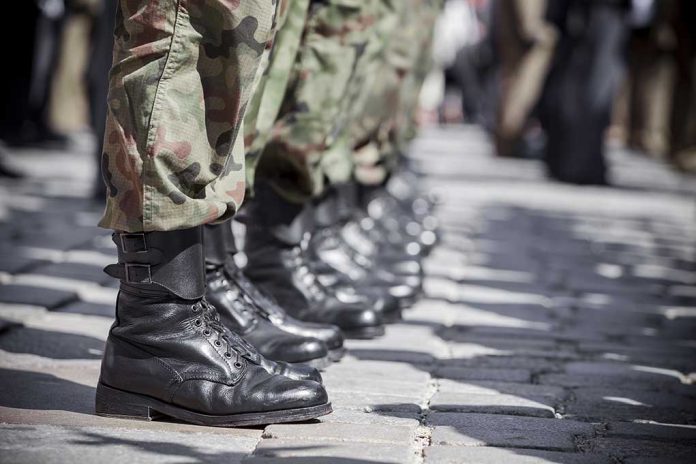
U.S. Marines arrive at Guantanamo Bay to support the expansion of migrant operations, signaling a significant shift in America’s approach to immigration control.
Top Takeaways
- Over 150 U.S. Marines have been deployed to Guantanamo Bay to support migrant operations.
- The base is being expanded to potentially house up to 30,000 migrants.
- This move is part of President Trump’s broader strategy to tighten border security and manage illegal immigration.
- The military will play a crucial role in supporting expulsions and mass deportations.
- The initiative has sparked discussions about increased DHS funding for detention centers and immigration system improvements.
Marines Arrive at Guantanamo Bay
In a bold move to address the ongoing immigration crisis, the Trump administration has deployed U.S. Marines to Guantanamo Bay Naval Base in Cuba. This strategic decision aims to expand the base’s Migrant Operations Center, signaling a significant shift in America’s approach to immigration control and border security.
The deployment includes over 150 service members, with Marines from the 1st Battalion, 6th Marine Regiment, 2d Marine Division taking the lead. Elements from U.S. Southern Command and U.S. Army South are also involved in this operation, highlighting the collaborative effort across multiple branches of the military.
Expanding Capacity for Migrant Detention
Guantanamo Bay, previously known for housing terrorist suspects, is now being repurposed to potentially hold up to 30,000 illegal and undocumented migrants. This expansion is a key component of President Trump’s comprehensive plan to address what his administration describes as a “border invasion” and to dismantle criminal cartels involved in human trafficking.
“U.S. Marines have arrived at Guantanamo Bay to support the Department of Defense and Homeland Security in expanding the Migrant Operations Center—advancing President Trump’s mission to protect Americans and secure our nation” – White House, President Donald Trump, and Vice President J.D. Vance
The initiative follows President Trump’s announcement to use Guantanamo for what he termed “high-priority criminal aliens.” This move has raised questions about the potential scope of detentions, including concerns about housing women and children at the facility.
Challenges and Controversies
The White House faces significant challenges in implementing this plan, with some countries refusing to accept their citizens back. A public disagreement between President Trump and Colombia’s President Gustavo Petro over the return of Colombian migrants underscores the diplomatic hurdles the administration must navigate.
DHS Secretary Kristi Noem has emphasized the use of existing facilities to house migrants, including children, and has not ruled out the possibility of detaining families at Guantanamo. This stance has sparked debates about the ethical implications and practical challenges of such a policy.
“You know, if you look at what we are doing today of targeting the worst of the worst, we’ve been very clear on that. The priority of this president is to go after criminal aliens that are making our streets more dangerous” – Kristi Noem
Broader Border Security Efforts
The Guantanamo expansion is part of a larger strategy to enhance border security. President Trump has deployed an additional 1,500 soldiers and Marines to the southern border, with plans to increase this number to 10,000 troops. These forces will assist in various border operations, including support for expulsions and mass deportations.
In a related development, the U.S. Coast Guard has begun flying detained migrants to deportation sites in Texas and California, further demonstrating the administration’s commitment to swift action on immigration enforcement. These measures, combined with the expansion at Guantanamo, represent a comprehensive approach to what the administration views as a critical national security issue.
As the situation continues to evolve, the deployment of U.S. military personnel to Guantanamo Bay marks a significant milestone in the ongoing debate over immigration policy and border security in America. The coming months will likely see further developments as this new approach is implemented and its effects become apparent.
Sources:
- Marines arrive at Guantanamo Bay as Trump’s migrant deportation plan moves ahead at warp speed
- Troops arrive at Guantanamo Bay to prepare migrant detention center
- Marines, soldiers arrive at Guantanamo Bay for migrant ‘holding operations’







